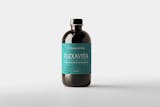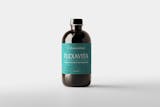External hemorrhoid treatment

Image Source: Pexels
Understanding external hemorrhoids
External hemorrhoids are swollen blood vessels located in the lower part of the rectum and anus. Unlike internal hemorrhoids, which develop inside the rectum, external hemorrhoids occur outside the body. These swollen veins can cause discomfort, pain, and itching, making it challenging to carry out daily activities comfortably. Understanding the causes, symptoms, and available treatment options is crucial in finding relief and improving your quality of life.
External hemorrhoids are mainly caused by increased pressure on the veins in the rectal area. This pressure can be a result of various factors, including prolonged sitting or standing, straining during bowel movements, pregnancy, obesity, and a sedentary lifestyle. Additionally, certain medical conditions, such as chronic constipation or diarrhea, may contribute to the development of external hemorrhoids.
Causes and risk factors of external hemorrhoids
External hemorrhoids can be caused by a variety of factors, with some individuals being more susceptible to developing them. Risk factors for external hemorrhoids include:
- Genetics: Some people may have a genetic predisposition to developing hemorrhoids.
- Age: As we age, the tissues supporting the veins in the rectal area may weaken, increasing the risk of hemorrhoids.
- Poor diet: A diet low in fiber can lead to constipation, straining during bowel movements, and the development of hemorrhoids.
- Lack of physical activity: Leading a sedentary lifestyle can contribute to constipation and the formation of hemorrhoids.
- Pregnancy: The increased pressure on the veins during pregnancy, especially during the third trimester, can lead to the development of hemorrhoids.
Symptoms of external hemorrhoids
External hemorrhoids can cause a range of uncomfortable symptoms. Some common symptoms include:
- Pain and discomfort: External hemorrhoids can be painful, especially when sitting or during bowel movements.
- Itching and irritation: The swollen veins can cause itching and irritation in the anal area, leading to discomfort.
- Bleeding: External hemorrhoids may occasionally bleed, typically during bowel movements.
- Swelling: The veins in the rectal area can become swollen and tender, causing discomfort and pain.
- Lumps or bumps: External hemorrhoids can be felt as lumps or bumps around the anus. These can sometimes be visible.
It's important to note that these symptoms may vary in severity, and not everyone with external hemorrhoids will experience all of them. If you're experiencing any of these symptoms, it's essential to seek proper diagnosis and treatment.
Home remedies for external hemorrhoid relief
If you're experiencing mild external hemorrhoid symptoms, there are several home remedies that can provide relief. These remedies aim to reduce inflammation, soothe the affected area, and promote healing. Some effective home remedies for external hemorrhoid relief include:
- Warm baths: Soaking in a warm bath for 15-20 minutes several times a day can help reduce swelling and alleviate discomfort.
- Topical treatments: Applying over-the-counter hemorrhoid creams or ointments containing ingredients like witch hazel or hydrocortisone can provide temporary relief from itching and pain.
- Sitz baths: A sitz bath is a shallow bath that covers the hips and buttocks. This type of bath can help soothe the affected area and reduce inflammation.
- Improved hygiene: Keeping the anal area clean and dry is essential for preventing further irritation. Gently patting the area dry after a bowel movement and using unscented, alcohol-free wipes can help maintain hygiene.
- Dietary changes: Consuming a diet high in fiber can help soften stools and prevent constipation, reducing the strain on the rectal area. Include foods like fruits, vegetables, whole grains, and legumes in your diet.
It's important to remember that home remedies may provide temporary relief but may not completely eliminate external hemorrhoids. If your symptoms persist or worsen, it's advisable to seek medical advice.
Over-the-counter treatments for external hemorrhoids
Over-the-counter (OTC) treatments can be an effective option for managing external hemorrhoids. These treatments typically come in the form of creams, ointments, or suppositories and can provide relief from itching, pain, and inflammation. Some common active ingredients found in OTC treatments for external hemorrhoids include:
- Hydrocortisone: This ingredient helps reduce inflammation and itching, providing temporary relief.
- Witch hazel: Witch hazel has astringent properties and can help shrink swollen blood vessels, reducing discomfort and itching.
- Phenylephrine: Phenylephrine is a vasoconstrictor that helps reduce swelling and provides temporary relief from pain and itching.
When using OTC treatments, it's important to follow the instructions provided and consult a healthcare professional if your symptoms persist or worsen.
Medical treatments for external hemorrhoids
In some cases, external hemorrhoids may require medical intervention for effective treatment. These treatments are typically recommended when home remedies and OTC treatments have not provided sufficient relief. Some medical treatments for external hemorrhoids include:
- Rubber band ligation: This procedure involves placing a rubber band around the base of the hemorrhoid to cut off its blood supply. Over time, the hemorrhoid shrinks and falls off.
- Sclerotherapy: Sclerotherapy involves injecting a chemical solution into the hemorrhoid, causing it to shrink and eventually disappear.
- Infrared coagulation: Infrared coagulation uses heat to cauterize the hemorrhoid, reducing its size and alleviating symptoms.
- Hemorrhoidectomy: A hemorrhoidectomy is a surgical procedure to remove the hemorrhoids. This is usually reserved for severe cases or when other treatments have been ineffective.
Medical treatments should be performed by trained healthcare professionals and are typically reserved for more severe cases of external hemorrhoids. It's important to discuss the potential risks and benefits with your healthcare provider before undergoing any procedure.
Lifestyle changes to prevent and manage external hemorrhoids
Making certain lifestyle changes can help prevent the development of external hemorrhoids and manage existing ones. These changes aim to reduce pressure on the veins in the rectal area and promote regular bowel movements. Some lifestyle changes that can be beneficial include:
- Maintaining a healthy weight: Losing excess weight can help reduce pressure on the veins and lower the risk of developing hemorrhoids.
- Staying active: Engaging in regular physical activity, such as walking or swimming, can help prevent constipation and promote bowel regularity.
- Avoiding prolonged sitting or standing: Taking breaks and avoiding prolonged periods of sitting or standing can help reduce pressure on the veins.
- Drinking plenty of water: Staying hydrated can help soften stools and prevent constipation.
- Avoiding straining during bowel movements: Straining during bowel movements can increase pressure on the veins, leading to the development of hemorrhoids. Ensure you have a balanced diet rich in fiber to promote regular and easy bowel movements.
By implementing these lifestyle changes, you can reduce the risk of developing external hemorrhoids and manage existing ones more effectively.
When to seek medical attention for external hemorrhoids
While most cases of external hemorrhoids can be managed with home remedies and lifestyle changes, there are instances where medical attention is necessary. It's important to seek medical advice if:
- Your symptoms persist or worsen: If your symptoms do not improve with home remedies or over-the-counter treatments, it's advisable to consult a healthcare professional.
- You experience severe pain: Severe pain or discomfort that interferes with your daily activities may require medical attention.
- You notice excessive bleeding: If you experience significant bleeding from your hemorrhoids, it's important to seek medical advice.
- You have a family history of colorectal cancer: If you have a family history of colorectal cancer, it's important to consult a healthcare professional for proper evaluation and advice.
Remember, early diagnosis and treatment can help prevent complications and provide relief from external hemorrhoid symptoms.
Natural and alternative treatments for external hemorrhoids
In addition to traditional treatments, some individuals may opt for natural and alternative remedies to manage external hemorrhoids. While the effectiveness of these treatments may vary, they can provide relief for some individuals. Some natural and alternative treatments for external hemorrhoids include:
- Aloe vera: Applying aloe vera gel to the affected area can help soothe inflammation and provide relief from itching and pain.
- Tea tree oil: Diluted tea tree oil can be applied topically to reduce inflammation and provide temporary relief.
- Epsom salt baths: Adding Epsom salt to a warm bath can help reduce swelling and alleviate discomfort.
- Dietary supplements: Certain dietary supplements, such as horse chestnut extract and butcher's broom, are believed to strengthen blood vessels and reduce inflammation.
It's important to note that natural and alternative treatments may not have extensive scientific evidence to support their effectiveness. It's advisable to consult a healthcare professional before trying any natural or alternative remedies.
Conclusion: Finding the right treatment for external hemorrhoids
Dealing with external hemorrhoids can be uncomfortable and painful. However, with the right treatment, relief is possible. From home remedies and over-the-counter treatments to medical interventions and lifestyle changes, there are various options available to manage and alleviate external hemorrhoid symptoms. It's important to understand the causes and risk factors, recognize the symptoms, and seek appropriate treatment based on your specific needs.
Remember, what works for one person may not work for another. It's essential to consult a healthcare professional for an accurate diagnosis and personalized treatment plan. With proper care and guidance, you can find the right external hemorrhoid treatment that will help you say goodbye to discomfort and hello to relief. Take control of your health and improve your quality of life – you deserve it.
What are external hemorrhoids?
External hemorrhoids are swollen blood vessels located under the skin around the anus. They can cause discomfort, pain, itching, and bleeding.
What causes external hemorrhoids?
External hemorrhoids can be caused by various factors, including straining during bowel movements, chronic constipation or diarrhea, sitting for long periods, obesity, pregnancy, and a sedentary lifestyle.
How can external hemorrhoids be treated?
There are several effective treatment options for external hemorrhoids:
1. Topical creams and ointments
Over-the-counter creams and ointments containing hydrocortisone or witch hazel can help reduce itching and inflammation. They should be applied directly to the affected area as directed.
2. Sitz baths
A sitz bath involves soaking the anal area in warm water for 10 to 15 minutes several times a day. This can help relieve pain, itching, and inflammation.
3. Dietary changes
Eating a high-fiber diet can help soften stools and make them easier to pass, reducing the strain on the hemorrhoids. Foods rich in fiber include fruits, vegetables, whole grains, and legumes.
4. Increased water intake
Staying hydrated by drinking plenty of water can help prevent constipation and promote regular bowel movements, reducing the risk of hemorrhoid flare-ups.
5. Physical activity
Engaging in regular physical activity, such as walking or swimming, can help improve bowel function and prevent constipation.
6. Medical procedures
In severe cases or when conservative treatments fail, medical procedures may be necessary. These can include rubber band ligation, sclerotherapy, infrared coagulation, or surgical removal of the hemorrhoids.
When should I see a doctor?
It is advisable to see a doctor if you experience persistent or severe symptoms, such as excessive bleeding, intense pain, or if your symptoms do not improve with home remedies. A doctor can provide a proper diagnosis and recommend the most appropriate treatment.
Can external hemorrhoids be prevented?
While it may not be possible to prevent external hemorrhoids entirely, certain lifestyle changes can help reduce the risk of developing them. These include maintaining a healthy weight, avoiding prolonged sitting or standing, practicing good hygiene, and avoiding straining during bowel movements.
Conclusion
External hemorrhoids can be uncomfortable and bothersome, but with the right treatment and lifestyle modifications, they can be effectively managed. It is important to consult a healthcare professional for an accurate diagnosis and personalized treatment plan.





